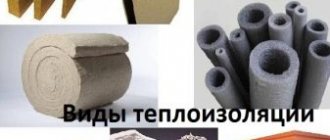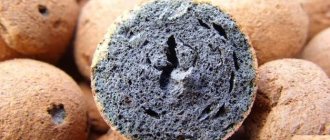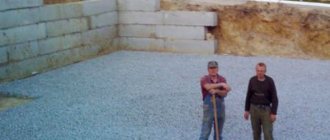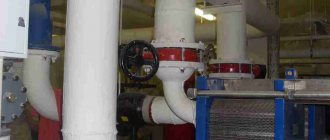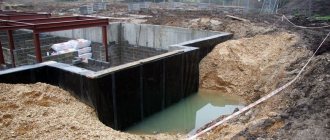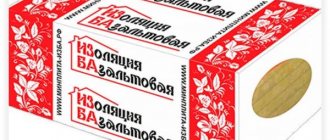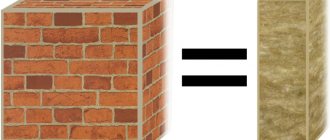Where different types of foil insulation are used: "BestIzol"

If you are interested in reflective insulation, then you can consider several varieties of similar materials, among others, you should highlight "BestIzol", which is a steam, heat and sound insulation with a high level of reflectivity.
This insulation consists of closed cell polyethylene film and aluminized foil. Polyethylene foam is used with a thickness that depends on its brand and varies from 2 to 10 mm. As for aluminum foil, its thickness can reach 14 microns, while the minimum value is 7.
Today, this reflective insulation is available for sale in several varieties, among others, type "A", type "B" and type "C" should be distinguished. The first option is insulation based on polyethylene foam with one-sided foil. The second solution has double-sided foiling, while the third has a foil layer on one side, and on the other, an adhesive with an anti-adhesive material is applied to the surface.
This insulation is effective not only for residential buildings, but also for insulating ships, vans, refrigerators, metal structures and ventilation ducts. This material is very light and durable, so it can be embedded in metal structures and fixed to control elements or frame. This eliminates the additional costs of temporary structures and insulation grids.
general information
In short, this material is an improved version of standard insulation. Its use reduces not only heat loss in rooms, but also heat transfer between the street and the room. In its structure, it has two layers:
- Foamed polyethylene or mineral wool acts as a basis. Often the base is expanded polystyrene produced using foamed technology.
- The second layer is aluminum foil. The thickness of this layer ranges from 7 to 15 microns.
In the production of reflective insulation, the foil is simply soldered to the base. Most of the companies that make this insulation option ship it in rolls. It is extremely rare to find it in the form of slabs.
Specialist shops offer reflective type one-sided and two-sided insulation. In the latter case, the foil material is located on both sides. When carrying out work in premises in order to reduce heat loss, the owners most often use rolls of one-sided insulation.
Insulation with two-layer models is most effective for insulating heating mains and pipelines. Also, this option is used in industrial facilities.
Nowadays, reflective materials are produced by a large number of enterprises. In Russia, such brands as "Penofol" and "Teplofol" have proven themselves well. A feature of the products of these companies is the presence of an adhesive layer. Thanks to him, the laying of the material is facilitated. Most manufacturers are engaged in the manufacture of reflective insulation based on polyethylene foam.
How to install reflective insulation:
Major market players - Rockwool, URSA and ISOVER - also produce foil mineral wool. It differs not only in thickness, but also in density. Warming mats and cylinders can be found in the product line of these companies. They are used for works on insulation of communication facilities and protection from heat losses of pipelines.
Additional area of use of "BestIzol"


The above reflective insulation has a fairly wide range of uses. It can be applied by installing behind heating radiators, which allows them to increase their efficiency by 30% maximum. If you install such a sheet behind a heating radiator, then more heat will be reflected into the room. The radiation will work to heat the room.
Using the type "A" type "BestIzol", you can insulate pipes of small diameter. The material is wrapped around the products, but for a hot pipeline in order to achieve maximum effect, it is necessary to use 20 mm banding rings made of the same material. As an alternative solution, an asbestos cord or fluoroplastic is used. In this case, the effect of a thermos is formed between the insulation and the pipes. However, in this case it is recommended to purchase "BestIzol" type "B".
How to use BestIzol


The above-described reflective insulation, the use of which is almost unlimited, is also used for roof purlins. To do this, the material is laid from the cornice to the cornice, and it must be carried through the ridge. It can sag 20 mm between purlins. Fastening is carried out with construction brackets, which are installed at a distance of 150 mm from each other. At the same time, ventilation, which is provided for by the building structure, is preserved. Double-sided insulation is suitable for this.
If it is used to insulate the attic, then it will be necessary to ensure that there is an air gap between the insulation or and the ceiling. To do this, you should purchase reflective insulation with one-sided foil, which should be directed outward. Additionally, slats are laid, the distance between which will be 250 mm.
Scope of application
Reflective insulation can be used in a wide variety of designs, even those that are complex in shape, have corners and bends. Optimum heat saving indicators can be achieved provided that material with a foil side thickness of 20 microns is used during work.
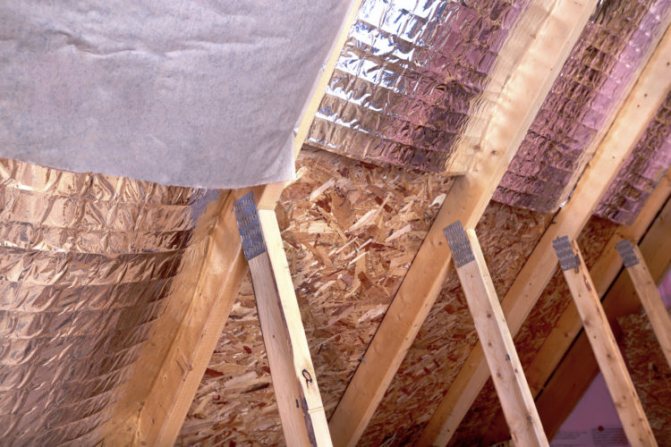

With such a heater, you can insulate the most inaccessible places.
The application of this solution is especially effective for works on thermal insulation of frame houses and multi-storey buildings. It significantly increases the thermal resistance of the walls, while not increasing their volume. The strips are mounted end-to-end without overlap. When reflective insulation is used, the application technology has its own nuances depending on the object on which the work is carried out.
Internal use
If you want to carry out insulation work in the room from the inside, there are two ways. The first involves the device of two air gaps directly between the wall and the material. In this case, rolls with a double foil layer are used.
Another option is to create a single gap between the insulation and the outer wall. To do this, use a material with a metal layer on one side.
For roof and pipes
With the help of reflective insulation, it is possible to successfully solve the problem of roof insulation. The use of reflective film is especially effective when working on the insulation of the ceiling surface in a bath.
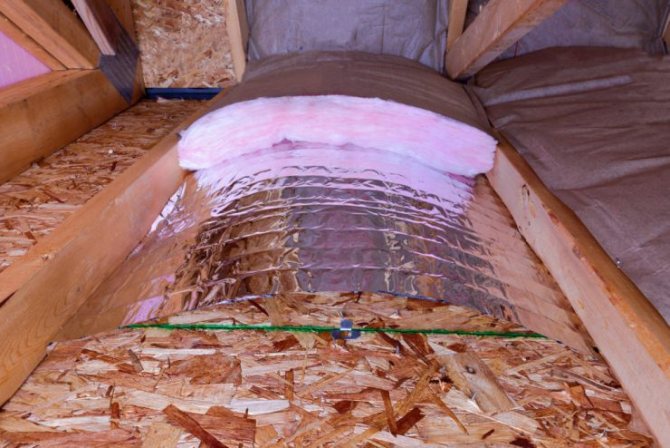

Reflective insulation is perfect for the attic
When carrying out work on the insulation of pipes, it is necessary to use a material that has a layer of foil on both sides.
When working on pipelines with a diameter of less than 159 mm, it is possible to dispense with the creation of a gap between the reflective insulation and the object. For pipe products with a large diameter, the presence of a gap is a prerequisite for obtaining a high-quality result.
The air gap arrangement can be implemented in several ways.The first option involves fixing foil-clad rings directly on the pipe at a distance of 300-400 mm from each other. Insulation must be placed on top of them. The second method requires laying wooden blocks along the pipe with a cross section of 10 by 10 mm. On top of them, the pipe is wrapped with insulating material.
Read more: on the methods of thermal insulation of heating pipes.
Heat-reflecting insulation is the best solution when it is necessary to ensure efficient heat retention. It has improved performance compared to traditional types of insulation. Competent performance of work allows you to reduce heat loss at various facilities and reduce heating costs.
Where to use "Penofol"
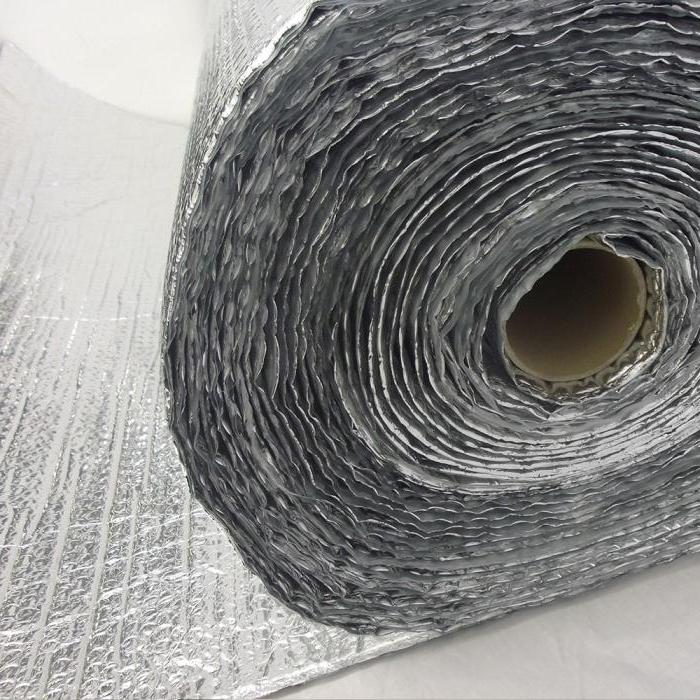

Traditional insulation can be supplemented with Penofol. It forms the basis of the structure in the construction of low-rise frame buildings, increasing the thermal resistance of the walls, because their volume increases. Using this insulation, you can reduce heat loss, because it has high reflectivity and is a reliable vapor barrier.
Reflective insulation "Penofol" complements the massive insulation and allows you to reduce its volume, increasing the service life. You can use the material for insulation:
- attics;
- roofs;
- attics.
It is used for insulation of floors and their insulation, as well as insulation of walls, ventilation ducts and pipes.
Energy saving and reflective insulation Penofol
Energy saving and reflective insulation Penofol
What is Penofol?
What is Penofol? This is reflective insulation, i.e. heat and vapor barrier with a reflective effect.
This material is a layer of foamed self-extinguishing polyethylene with closed air pores, coated on one or both sides with high quality aluminum, 14 microns thick and 99.4% pure. The low emissivity properties of aluminum foil prevent radiant heat transfer. Radiant energy passes through massive (traditional) thermal insulation, while PENOFOL reflective insulation is able to stop it. This thin, flexible, lightweight, environmentally friendly material with its small thickness (less than a millimeter) has high resistance to heat transfer, which is due to the low thermal conductivity of polyethylene foam (due to the large number of closed pores) and the high reflectivity of polished, chemically pure aluminum foil. The versatility of Penofol reflective insulation lies in the fact that the material has both steam, hydro, wind, and sound insulation properties. Penofol is convenient for fixing, since it is thin, flexible and lightweight. It is safe to work with Penofol as it is environmentally friendly.
Penofol - this is the first Russian reflective insulation... The technology developed for the thermal protection of spacecraft has been successfully adapted for the needs of private and industrial construction. Reflective insulation Penofol is produced in three main versions: with one-sided foil (type A - fig. 1), double-sided (type B) and self-adhesive (type C). All three types of Penofol are supplied in rolls. The peculiarities of using different types of Penofol reflective insulation for solving specific thermal insulation problems can be found out from professional technical specialists who are able to find optimal thermal solutions - from the point of view of physics and economics. For more than 10 years Penofol has been a guarantee of the quality of reflective insulation, and the Regent-Stroy retail network is the best author's developments of heat-insulating schemes.
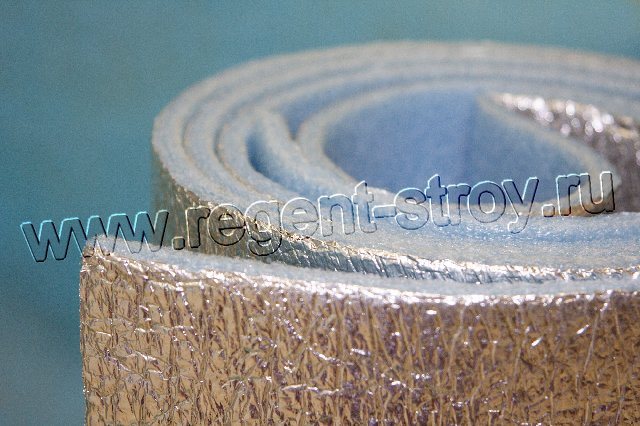

Fig. 1. Penofol type A
The operating principle of Penofol reflective insulation is based on the high heat-reflecting ability of aluminum. It is aluminum foil in combination with polyethylene foam that stops heat in all three ways of its propagation from a "hot" body to a "cold" one.The use of foamed polyethylene is due to many reasons. First, the environmental friendliness of the material - it does not emit harmful substances during operation. Secondly, the thermal conductivity of polyethylene foam is optimal for solving thermal insulation problems - 0.049 m2 / s • W. The closed system of air bubbles prevents the penetration of water vapor, which allows Penofol to be used as a vapor barrier and makes it more versatile.
The use of Penofol in the insulation of building envelopes.
The prescriptive approach of rational thermal protection of buildings has led to the fact that the stock of residential and public buildings built in Russia before 1995 is currently extremely inefficient in terms of energy consumption. Therefore, in 1995, Russia adopted new standards for thermal protection of buildings in order to reduce the level of energy consumption of buildings under construction and renovation. According to the new energy-saving standards, since 1995 (I stage) and 2000 (II stage), the norms of the thermal protection characteristics of the rear enclosing structures have been increased by 2-3 times. These new standards for heat conservation require builders to use modern high-performance insulation materials that significantly increase the heat-shielding properties of building envelopes. According to the current new standards, the value of the resistance to heat transfer of roofing systems in the Moscow region is R = 4.5 - 4.7 m2 • K / W. To provide such resistance, the thickness of traditional thermal insulation materials is required: glass wool, mineral wool, foam, etc., or more durable polyurethane foam, i.e. for λ = 0.04 - 0.07 W / m • K and Siz = 200 - 300 mm. As a rule, the thickness of the rafters is 150 mm, and therefore they are "built up" with additional bars to the required thickness. This leads to an increase in the cost of the roof.
Problems of housing and communal services and ways to solve them from the point of view of thermal physics
By the beginning of 2003, the physical deterioration of heat pipelines in many regions of Russia reached a critical level - 75%, since in the last 10-15 years, heat pipelines were shifted 1-2% per year instead of 10%. The housing and communal disaster (HCC), the possibility of which the President spoke about in 2001, has come and promises to become a “chronic catastrophe”. The possibility of overcoming the crisis is reflected (provided for) in the subprogram “Energy efficiency in housing and communal services” of the federal target program (FTP) “Energy efficient economy” for 2002-2005. and for the future until 2010, approved by the decree of the Government of the Russian Federation of November 17, 2001. In order to overcome the crisis, the FTP provides for energy efficient measures that provide significant savings in energy resources. Among them are the modernization of heat supply systems using the technology of channelless laying of heat pipes, automation of thermal control points. Assumed in 2002-2005. save 14 billion rubles through the use of energy-saving capacities. (in 2001 prices). Reconstruction of heating networks, i.e. replacement by heat pipelines with polyurethane foam (PPU) insulation, will provide an annual economic effect of ~ 0.5 million rubles. per 1 km of heat pipe. Note: the total volume of production of pre-insulated PPU heat pipelines in 2001 in the Russian Federation amounted to 1500 km (only in Chuvashia it is in operation - 1000 km. How many years will it take to shift 75% of worn-out heat pipelines throughout the Russian Federation? their purchase for ganitsa) will reach 2000 - 3000 km per year, then it will take at least 30 years to replace 75 thousand km.
The ultimate goal of the FTP is to ensure the transition of housing and communal services to an energy-saving path of development and the success of this reform, of course, depends on whether economic and technological mechanisms for its implementation are found in time. The main technological mechanism designed to regulate the relationship between manufacturers of heating networks, designers, builders and operational (s) ikami are normative documents (ND). At present, many of the general ND package have already been developed: GOST 30732 - 2001 “Steel pipes and fittings with polyurethane foam insulation in a polyethylene sheath. TU. ”, SNiP“ Heating networks ”, etc., and the rest of the normative documents are adjusted taking into account energy saving. According to new energy saving standards since 1995(Stage I) and since 2000 (Stage II), the norms of thermal protection characteristics of building envelopes have been increased by 2-3 times (thermal resistance R increased to 1.8 m2 K / W (stage I) and 3.2 m2 K / W (stage II) at latitude Moscow). However, the main part of the housing stock, administrative and industrial buildings was built before 2000 and for them the value of R ~ 1 m2 K / W. Thermal insulation of such buildings with traditional heat-insulating materials TIM (80% of the produced TIM are mineral wool and expanded polystyrene, the service life of which is ~ 10 - 20 years) will require huge material costs and high labor intensity of the construction process. In addition, they will have to be shifted twice in 30 years. Insulation using foam concrete with a density of ~ 500 kg / m3 and a thickness of more than 150 mm will lead to an additional weight load on “worn out” (without major repairs) buildings. Compensation for the huge heat losses of worn-out heat pipelines and buildings by increasing energy capacity (increasing temperature and heat carrier consumption) is not effective and is limited by maximum permissible norms and an increase in prices for energy carriers (electricity, gas and liquid fuel) as their reserves are depleted. Thus, the insulation of buildings built before 2000 is one of the main problems of the successful reform of housing and communal services, the ultimate goal of which is still to ensure the temperature set by sanitary standards in living quarters of 18 - 20 ° C, and not to save for the sake of economic effect. At the same time, a technological solution to this problem can be the use of new TIM based on reflective insulation (OI).
REFLECTIVE INSULATION PENOFOL
combines the heat-insulating properties of the "trapped" airspace with the highly reflective aluminum foil, thereby being a new unique product that stops heat in all three paths of its propagation from a "hot" body to a "cold" one. Because Penofol is impervious to convection and moisture, it is a perfect vapor and air barrier and, therefore, a perfect (effective) heat-insulating product. Because heat inside the premises is transmitted mainly through the radiation of heat waves, it is important to deal with this type of heat transfer if we want to build an energy efficient structure. All bodies (objects) in a closed system emit heat waves, exchanging them with other objects. Walls and ceilings absorb heat waves, converting them into heat, which can then be transferred (passed) through the walls to the cold external environment (space). The best way to stop thermal radiation is to reflect it (decrease emissivity). Penofol, just, has this property - it has a high reflective and low emissivity, thanks to the use of high-purity (99.9%) aluminum foil (10-15 microns thick), capable of reflecting 95-97% and emitting no more than 3-5% of thermal radiation. In addition, bubbles of "trapped" air between the aluminum foils create a barrier to heat flow (thermal resistance), giving additional thermal benefits. In winter, Penofol retains heat, because Al foil has a low emissivity. In summer, it reflects heat rays, keeping the interior cool and comfortable.
Penofol is lightweight (density ~ 40 kg / m3) and is so easy to install that the labor cost will be 50% less than the cost of installing conventional massive insulation. Once installed, Penofol is impervious to moisture and builders do not need to worry about deterioration from rain or roof leaks. In rain or snow Penofol retains its heat-insulating properties. Metal structures are especially sensitive to temperature changes. The ability of Penofol to reflect in both directions gives all metal structures additional heat resistance that conventional massive insulation cannot provide. Penofol is so strong and lightweight that in many applications it can be easily built into metal structures by attaching it directly to the framing elements (or frame). This eliminates the need for additional costs, the need for temporary structures or grids for fixing the insulation.At the same time, the additional weight load is negligible.
On livestock farms, OI Penofol makes it possible to create self-regulating heating due to the animals' own heat. When the ambient temperature drops, it provides insignificant heat loss compared to conventional walls and ceilings, thereby significantly reducing energy consumption. Because Penofol is unsuitable for nests of various rodents and pests, then such structures reduce food consumption and disease. Penofol is durable and moisture resistant, which allows you to clean it with a high pressure jet and thereby disinfect the animal room. PENOFOL (polyethylene foam + Al foil) is an environmentally friendly product (it is food packaging).
OI and CONDENSATION.
The main reason for condensation of water vapor is a drop in air temperature below the dew point temperature. It follows from this fact that insulation of any kind will promote condensation. Condensation of water vapor occurs on any surface. Metallic surfaces (eg Al foil) are better at detecting condensation than porous solid insulation materials (glass fibers, foam, etc.). This does not mean that massive insulation (MI) does not undergo condensation, but means that condensation on it does not occur as quickly as on a metal surface, which dissipates the heat released during condensation. The condensation rate depends on the rate of dissipation of heat released during condensation, and the amount of condensate depends on the presence of a vapor diffusion barrier. If the amount of saturated vapors, independent of the type of surface, is reached in the MI air pores, then condensation also occurs in them. This invisible condensation leads to degradation of the thermal insulating properties of the MI, as well as to its destruction. Temperature changes can occur, for example, when air moves from one place to another. During condensation, the amount of water vapor in the air decreases and the process continues until saturation (equilibrium) is reached. If, however, there is an air mass nearby that contains more water than cold vapor-saturated air, then diffusion will occur. This diffusion process does not require the movement of the air mass. To prevent such diffusion and subsequent condensation, it is necessary to remove water vapor from the air by ventilation.
Thus, the difference between the types of insulation lies in the rate at which the heat generated by condensation dissipates. The misconception that the “moisture problem” only concerns reflective insulation (RI) is a result of poor moisture control, not a lack of reflective insulation. OI allows you to create separate temperature regimes and eliminate condensation.
There is currently no industry accepted standard for measuring the thermal performance of OIs. The thermal resistance (RT) standards, which are the standard for all types of thermal insulation, do not accurately measure the thermal reflectivity of Al foil, especially for exposed surfaces. The thermal performance of RI is incompletely measured by the value of R. In many applications, RI can significantly exceed the TIM of a comparable value of R. There are no standards that adequately assess the additional benefits obtained from the vapor and wind insulating properties of the RI. The absence of such special standards, clearly expressing the special thermal capabilities (properties) of OI, is the main (main) obstacle to their widespread industrial application.
COMPARATIVE CHARACTERISTICS.
At present, on the basis of foamed polyethylene LIT CJSC, together with… .., has developed and produced a series of new TIMs: penofol, armofol, “bubble”, etc. PENOFOL is a foamed polyethylene coated on one (or both) sides with aluminum foil.ARMOFOL - double foil reinforced with a polymer mesh. BUBBLE - foil + foam + bubble base. On the basis of these materials, constructive options for internal and external insulation of buildings are proposed, incl. and combined using traditional TIM. In particular, the use of mineral wool mats in the system of ventilated facades of multi-storey buildings is unacceptable in terms of their operational reliability. In combination with penofol, their main drawback is eliminated - low reliability due to weathering of mineral wool along the height of the ventilated air gap. In addition, combined insulation allows you to meet new regulatory requirements for both stages I and II. In terms of its thermal insulation properties, OI competes with polyurethane foam insulation and is more effective than traditional TIM: expanded polystyrene by 4-8 times, mineral wool slabs by 4-12 times and foam concrete by 12-24 times. To provide a heat transfer resistance of 1.2 m2 K / W with a thickness of an insulating structure using foam foam of 20-30 mm, the following thickness is required: expanded polystyrene ~ 60 mm, mineral wool ~ 70 mm, foam concrete ~ 160 mm, expanded clay concrete ~ 300 mm, brick ~ 600-900 mm ...
In a number of industries (light industry, agriculture, medicine, construction, aviation, etc.), where the use of most traditional TIMs is limited by sanitary standards, there is no alternative to the use of OI. OUTPUT. Excessive consumption of energy for heating homes depletes its non-renewable fuel supplies, putting additional pressure on the economy and often exceeding the energy belt's capacity to meet growing needs. The way out is the use of new TIM (OI for house insulation, polyurethane foam for heating networks) - the most effective way to save energy. Moreover, where the heating networks are not completely worn out, first of all, to carry out the insulation of OI houses, and not to carry out simultaneously the insulation of houses and the replacement of heating networks. This will make it possible to halve both costs and time (instead of 20-30 years - 10-15) for reforming housing and communal services (overcoming the crisis) and ultimately save people from freezing.
How to use "Penofol" for the roof
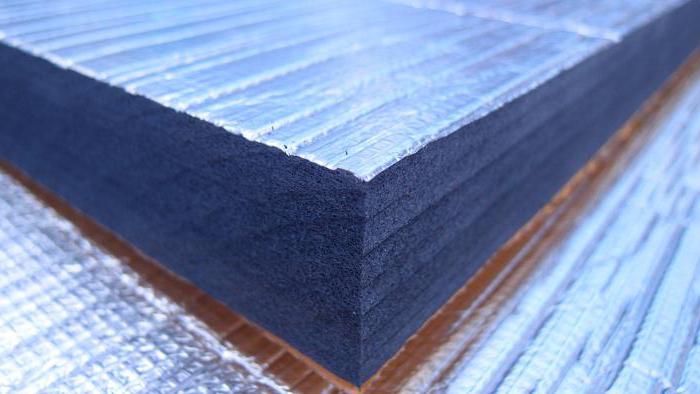

The maximum effect when using "Penofol" for the roof can be achieved by providing an air space of 2 cm on both sides of the insulation. Aluminum conducts electricity well, so wiring must be protected. Before installing the material, it is important to take care of the reliability of the wiring. The insulation used will reflect up to 97% of the heat flux. The inner layer of the roof insulation must be made airtight.
The reflective layer must be directed towards the heat source. In order to achieve complete tightness and waterproofing, the joints must be glued with foil tape. The basic rule is that foil acts as an excellent conductor of electrical current. To fix the material from the inside, you should prepare self-tapping screws or a stapler. For this, it is most convenient to purchase 5 mm sheets. If you have to work in a house or apartment, then you must use one-sided material. But in the case when the walls are very cooled, additional insulation with expanded polystyrene or cotton wool should be carried out.
Important characteristics
By making a choice in favor of modern material, the owner of the premises receives certain advantages. They are largely due to the high performance of the insulator itself.
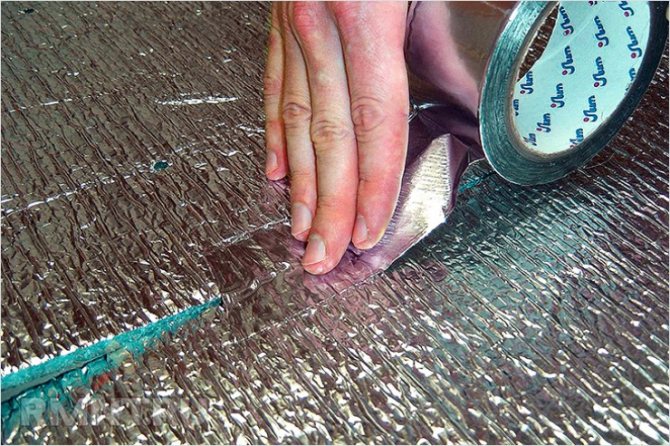

The gaps between the foil can be sealed with aluminum tape
When using such a solution in the cold season, heat loss is excluded. In the summer, there is no excess heat energy in the rooms of the building. As a result, a small amount of resources have to be spent on maintaining an optimal microclimate. Reflective insulation works like a thermos, preventing the penetration of thermal energy along a given vector.
If the structure is arranged in a competent way, then it is able to reflect up to 90% of the heat. This ensures maximum indoor comfort.
One of the features of foil insulation is its complete waterproofness. This statement is especially true for models made on the basis of polyethylene foam. Aluminum foil is non-flammable. Therefore, the use of such a layer, together with foam or foamed polyethylene, provides an increase in fire safety.
Read the same: about non-combustible fireproof heaters.
In terms of physical properties, reflective insulation has the same properties as the base layer. The smallest thickness is possessed by a material that is based on polyethylene foam. Models made on the basis of mineral wool with the addition of a layer of foil have a large thickness.
An important advantage of such insulation is its ability to guarantee the protection of premises from electromagnetic radiation. The use of the material provides a 2-fold reduction in its intensity.
How reflective insulation behaves in a fire:
Advantages and disadvantages
Any material used in the construction industry becomes popular if it has a set of unique positive qualities that are in demand among consumers. In the case of reflective insulation, there is no drawback in them.
Experts highlight the following advantages:
- The material meets hygienic standards, since the main components in its manufacture are polyethylene and foil.
- This solution is able to reflect up to 97% of thermal energy.
- Polyethylene foam, in the structure of which there are air bubbles, allows you to achieve additional thermal resistance.
- High fireproof properties. Experts classify the material as a highly flammable material.
- Reflective insulation rolls are lightweight and compact. Therefore, there are no problems with storage, they are convenient to transport.
- When using material for surface insulation, heating costs are reduced. The savings for the owner of the building are much higher than in the case of other solutions.
The main disadvantage of reflective heaters is softness. After installation, no finishing work is carried out using plaster and ordinary wallpaper. Another disadvantage is that easy fastening is possible only when using materials with an adhesive backing.
Other models have to be installed using a suitable bonding agent. When the material is nailed to the surface, it reduces its thermal insulation performance. When insulating facade walls, it can only be used as an additional layer, acting as a protection against moisture and reflecting heat.
Appointment of insulation VPE lavsan
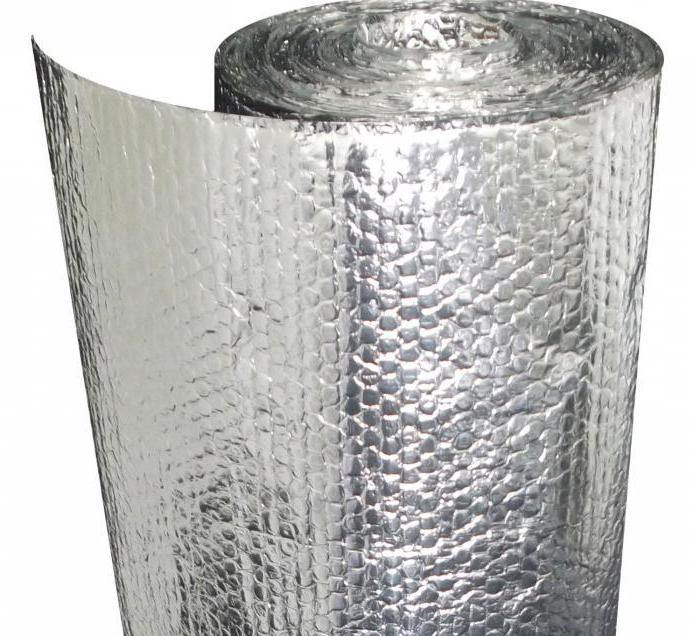

The reflective HPE insulation is made of foamed polyethylene and has a silvery surface. This material is practical, ready to serve for a long time, affordable and versatile. It is used for noise and heat insulation of premises for various purposes. With its help, it is possible to achieve partial damping of vibration. The products are placed under the decorative coating of the floor, ceiling and walls, and they can be used even in those conditions where high humidity will remain during operation.
Metallized roll isolon NPE LP. Ekofol NPE LP type A
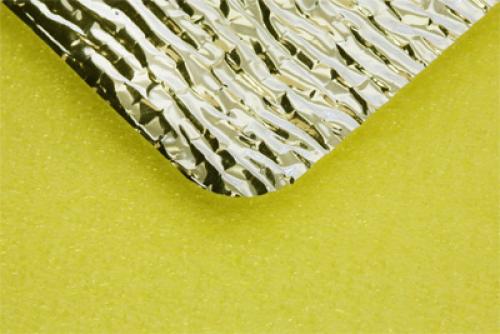

Ekofol NPE LP, type A is a high-performance heat-insulating material of Russian production made of foamed polyethylene duplicated with a metallized film.
Ekofol NPE LP, type A is a reflective thermal insulation. Metallized polypropylene film is used as a reflective element (thermal mirror). The metallized film reflects up to 80% of radiant heat.Thus, the overall efficiency of a thermal insulation system using reflective insulation (depending on particular conditions, season, etc.) increases by 20-70%, creating a "thermos effect". Also, the metallized film has high mechanical strength and resistance to alkalis, acids and organic solvents. Due to the quality characteristics of the material, it is recommended for use in places subject to external environmental factors.
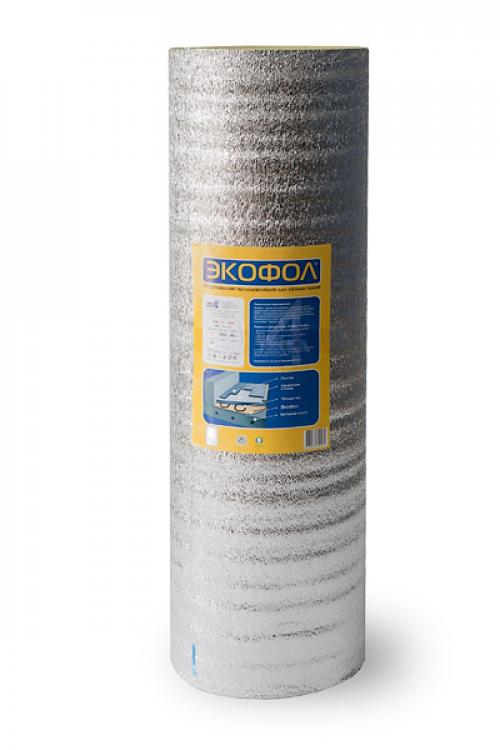

Basic properties
- Metallized lavsan film is resistant to alkaline environment;
- good thermal insulation (due to the reflection of radiant energy);
- good vapor barrier;
- good sound insulation;
- ease of installation (easily cut with a clerical knife, can be mounted with small nails, a furniture stapler, glued with tape);
- not subject to decay, corrosion, oil-resistant;
- environmentally friendly and safe material.
Standard sizes
| Thickness, mm | Width, mm | Length, m | Area, m2 | Release form | Diameter, cm | Weight, kg |
| 2 | 1200 | 25 | 30 | Roll | 30 | 3 |
| 3 | 1200 | 25 | 30 | Roll | 40 | 3,5 |
| 4 | 1200 | 25 | 30 | Roll | 45 | 4 |
| 5 | 1200 | 25 | 30 | Roll | 50 | 5 |
| 8 | 1200 | 15 | 18 | Roll | 50 | 4,1 |
| 10 | 1200 | 15 | 18 | Roll | 55 | 5 |
| 15 | 1200 | 10 | 12 | Roll | 55 | 5 |
| 20 | 1200 | 10 | 12 | Roll | 60 | 6,5 |
How to use HPE insulation
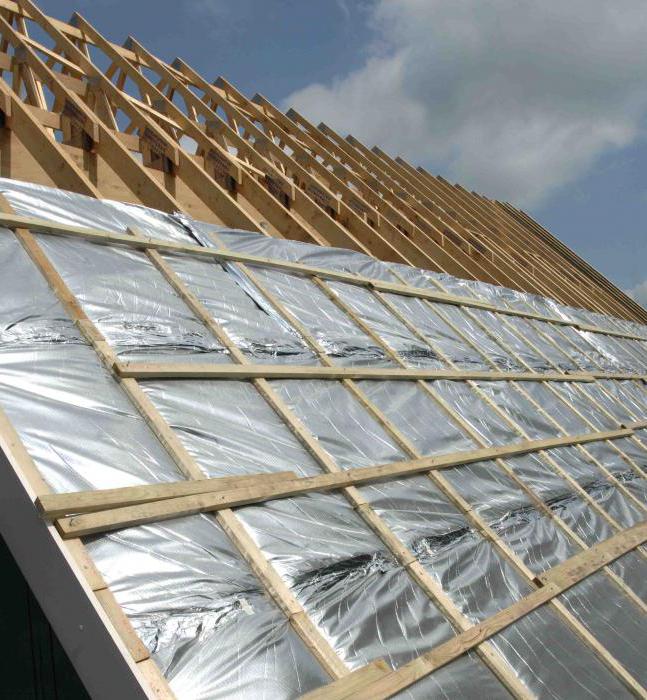

HPE reflective insulation can be mounted on surfaces with any configuration. The material is effective in low-rise construction, and the canvases are attached end-to-end, while overlap must be eliminated. The joints must be sealed with a special foil tape with an adhesive layer. You can use a composite of polyethylene and aluminum for this.
The connecting element is robust, moisture resistant and reflective of infrared and ultraviolet light. The service life can reach the time of using the foil layer itself. By using HPE reflective insulation, you can reduce heating costs and achieve significant energy savings.
Insulation can be installed under parquet, laminate or other floor coverings, as well as in a floor heating system under a gypsum or cement screed. Reflective insulation 10 mm is the thickest version of this coating. The minimum thickness is 2 mm, while the width remains the same and equal to 1 m. But the length varies from 10 to 100 m. For a 10-mm thickness, the price of one square meter will be 58.13 rubles.
How and where are different types of reflective insulation used?
All types of heat-reflecting insulation can be classified into three types, each of which is designated by its own letter. For example, Type "A" is a polyethylene foam material with foil on one side. This insulation is versatile and can be installed on any surface. It is glued with special glue or nailed to a wooden surface with staples or nails.
The one-sided coating speaks for itself, because this solution can be used in most cases for interior work, installing it with foil inside the room. Type "B" is also foamed polyethylene, but its thickness reaches 5 mm. The coating is here on both sides, it is foil-coated and expands the area of use. This material can be used for refrigerating chambers, which should not let heat through on one side, and not let out cold on the other. This reflective insulation can be used for walls, if you need to maintain the same temperature in different rooms.
The last type of such insulation is Type "C". If we compare it with type "A", then it has a self-adhesive base, but otherwise it is almost no different. Convenience of work is an additional advantage.
How it works ↑
Foil foam insulation acts as a vapor barrier. In fact, having sheathed the house with such a heater, you will get a result when moisture cannot escape through the walls and floor. Additional ventilation is provided for ventilation. In a way, this is a problem.But exactly the same difficulty arises when insulation is done from the inside and you have to do a vapor barrier. Regardless of what material is used for this, the effect will be the same - the walls stop breathing freely, and here one cannot do without preventive ventilation through doors and windows. But this is also insulated. Although experts strongly recommend giving preference to outdoor insulation, they often also insulate from the inside.
